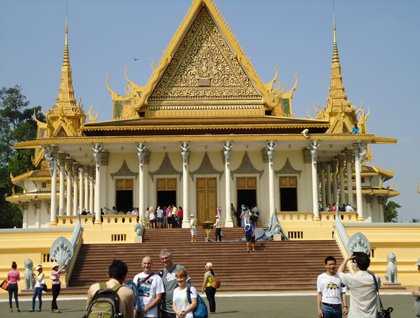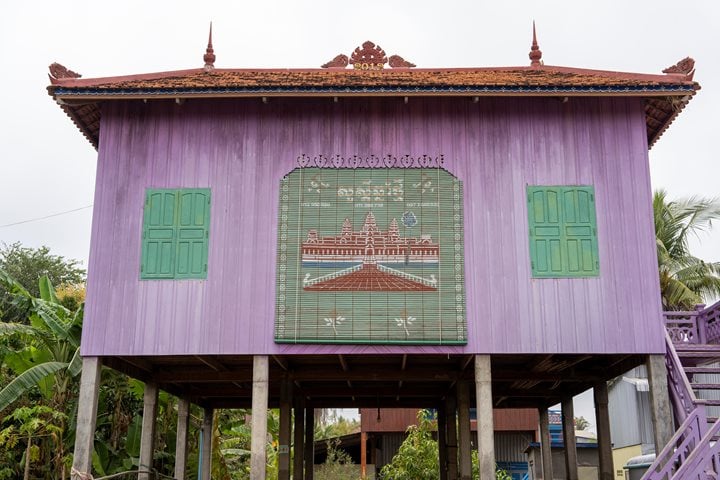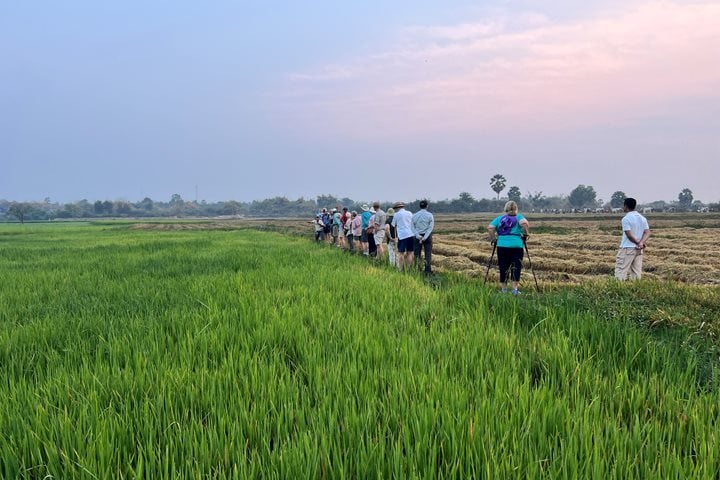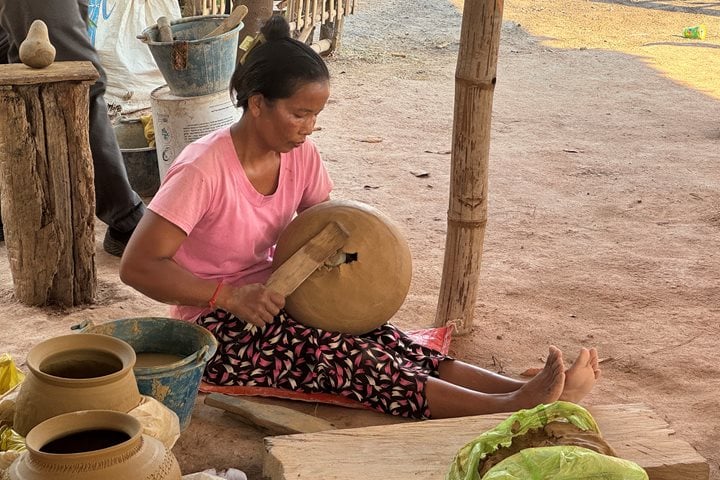Phnom Penh, capital and economic centre of Cambodia, lies at the confluence of the Mekong, Bassac, and Tonle Sap Rivers. The city is often neglected by visitors because most flights, for obvious reasons, land in Siem Reap, adjacent to the Angkor ruins. The old city has its attractions, however: from the waterfront, it has the aspect of the French colonial town that it was for the century prior to independence in 1953. There is much new construction in the centre and along the Bassac River to the south, but it does not detract from the overall impression of a solid old Southeast Asian capital.
We awake at 6 a.m. as our vessel comes alongside her sister ship Jayavarman at the port just north of city centre, where a number of river vessels are already moored. After breakfast, we board a parade of “cyclopousses”, powered by well-muscled, and mostly elderly, drivers. Making our way through heavy traffic, we come within inches of colliding with the steady stream of Lexus and Range Rover SUVs, delivery trucks, motor scooters, and tuk-tuks—ubiquitous motorcycle-powered mini-taxis patterned after those that have ruled the streets of Bangkok for decades.
Our first stop is the Royal Palace and the magnificent Silver Pagoda, as well as other palace attractions now including a miniature replica of Angkor Wat. The Palace. The French influence is evident only in the equestrian statue presented to King Norodom in the 1860s by Napoleon III, but with the later substitution of the head of Norodom himself. The Silver Pagoda is named for its solid silver floor panels, and is dominated by a two-foot “emerald” Buddha, made, in reality, of a translucent jadeite.
We continue our tour with a visit to the excellent National Museum, built in 1917 in traditional Khmer style and featuring fine examples of Cambodian statuary of the pre-Angkorian and Angkor periods; we are impressed with the professionalism of the museum guides, and take time to review a very good selection of books on the exhibits and on the Angkor ruins themselves.
Lunch is provided at one of Phnom Penh’s classic restaurants, Topaz, where we learn that sumptuous Western cuisine is still possible in this former French protectorate. By striking contrast, we are then taken to the infamous “S-21” security facility, otherwise known as the “Genocide Museum,” where some 17,000, mostly quite innocent, dissidents from Khmer Rouge rule were interrogated, signed spurious confessions, and then were sent to the Cheoung Ek “Killing Field” to be dispatched and buried in shallow mass graves. About half of our guests opt to visit Choeung Ek to view the large stupa full of skulls and bone fragments that surface regularly in the surrounding area.
A second group is enticed to visit the NGO Tabitha. This Cambodian organization was founded some 20 years ago by an unlikely Canadian saint, Janne Ritskes, who greets her visitors personally between meetings and explains the objectives of Tabitha. With support from Foundations in Canada, the USA, Australia, Singapore, and the UK, as well as supporting visitors, sinks wells, builds houses, and supports village development. It encourages people to put aside a small amount of money a month, then pays interest on their savings. The travellers are generous—they purchase everything from silk fabric to leather shadow puppets and to the building of a hospital dedicated to women’s diseases.
We end the day with a casual and delicious barbeque buffet on the pool deck, followed by an exotic and beautifully executed demonstration of traditional Khmer dance. This is performed by a small company of young, attractive, and well-trained dancers from Cambodia Living Arts who provide a fitting climax to a busy day in Phnom Penh.







